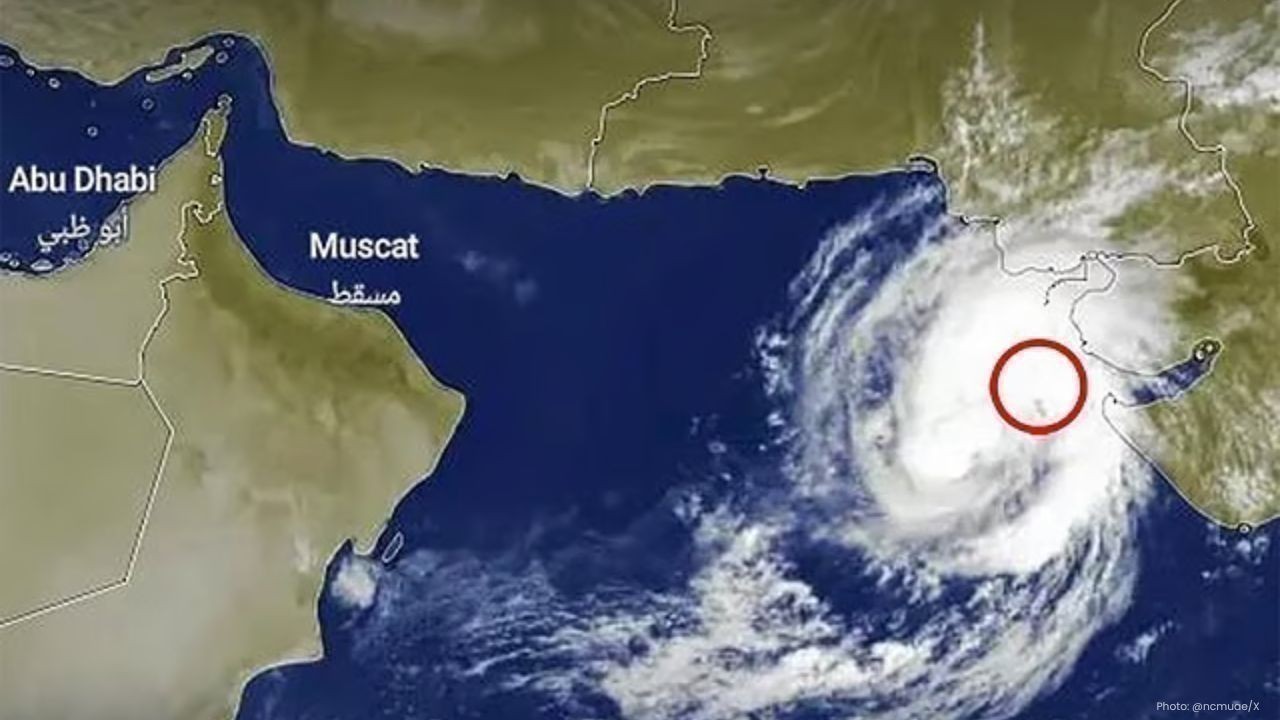
Post by : Kanchan Chandel
Costa Rica: A Pioneer in Eco-Tourism
Costa Rica, a small Central American country, has earned a big reputation as a global leader in eco-tourism. Known for its lush rainforests, stunning biodiversity, and strong commitment to environmental conservation, Costa Rica offers a unique blend of natural beauty and sustainable travel practices that attract millions of visitors each year.
Costa Rica's dedication to the environment started decades ago. Realizing the importance of its natural resources, the country set out to protect its rich ecosystems. Today, over 25% of Costa Rica's land is designated as protected areas, including national parks, wildlife reserves, and biological corridors. These areas not only preserve the country's diverse wildlife but also serve as major tourist attractions.
Costa Rica is home to about 5% of the world's biodiversity. For a country that covers only 0.03% of the Earth's surface, that's a remarkable feat. The country's varied climate and geography create habitats for a wide range of species, including more than 500,000 species of plants, animals, and insects. Visitors can explore rainforests, cloud forests, and coastal ecosystems, all within a few hours' drive of each other.
Eco-friendly accommodations are a staple of Costa Rican tourism. Many hotels and lodges follow sustainable practices, from using renewable energy sources like solar panels to implementing comprehensive recycling programs. Accommodations range from luxurious eco-resorts to rustic jungle lodges, all designed to minimize their impact on the environment. These efforts ensure that travelers can enjoy their stay while knowing they are supporting conservation.

Eco-tourism in Costa Rica isn't just about the environment; it's also about people. Local communities play a vital role in the eco-tourism industry. Many tours are led by local guides who share their knowledge of the flora, fauna, and culture. This not only provides visitors with an authentic experience but also helps support local economies. Projects like community-run lodges and craft cooperatives allow tourists to directly contribute to the well-being of the people who call these beautiful places home.
Eco-tourism in Costa Rica is both an adventure and an education. Activities such as guided nature walks, bird watching tours, and visits to sustainable farms teach visitors about the importance of conservation. Adventure seekers can enjoy activities like zip-lining through the canopy, white-water rafting, and hiking volcanoes, all while learning about the ecosystems they are exploring. These experiences help foster a deeper appreciation for nature and the need to protect it.
Technology is playing an increasingly important role in Costa Rica's eco-tourism industry. Many eco-lodges and tour companies use apps and websites to provide information about sustainable practices and conservation efforts. Virtual tours and educational videos help attract and inform potential visitors. These tools not only enhance the visitor experience but also promote sustainable travel practices.
Despite its success, Costa Rica faces ongoing challenges in maintaining its eco-tourism model. Balancing tourism growth with environmental preservation requires constant effort. Climate change, in particular, poses a significant threat to the country's ecosystems. Costa Rica continues to innovate and lead in sustainable practices, aiming to reduce the carbon footprint of tourism and enhance the resilience of its natural habitats.
Costa Rica's transformation into an eco-tourism haven didn't happen overnight. It began with a bold vision of sustainability, deeply rooted in the country's commitment to preserving its natural beauty. This vision has guided the nation’s policies and practices, turning it into a global model for environmental stewardship and sustainable tourism.
Costa Rica's journey towards sustainability started in the 1970s when the government began to realize the value of its natural resources. Rather than succumbing to the pressures of deforestation and unsustainable agriculture, Costa Rica chose a different path. The government implemented progressive environmental laws aimed at protecting the country's rich biodiversity and promoting conservation.
One of the most significant steps in this journey was the establishment of a comprehensive system of national parks and protected areas. Today, over a quarter of Costa Rica’s land is protected, safeguarding rainforests, cloud forests, beaches, and wetlands. This extensive network of parks is not only crucial for conservation but also serves as a major draw for eco-tourists.
The famous Monteverde Cloud Forest Reserve, for instance, offers visitors a glimpse into a rare ecosystem teeming with unique plants and animals. Similarly, the Corcovado National Park on the Osa Peninsula is known for its stunning biodiversity, including tapirs, jaguars, and scarlet macaws. These parks provide a sanctuary for wildlife and a paradise for nature lovers.
Costa Rica’s commitment to sustainability is also evident in its reforestation efforts. The country has turned the tide on deforestation, with forest cover increasing from around 21% in the 1980s to over 50% today. This remarkable achievement is due to initiatives like Payments for Environmental Services (PES), which incentivize landowners to conserve and restore forests.
These reforestation projects not only combat climate change by absorbing carbon dioxide but also create habitats for countless species. They are a testament to the power of sustainable practices and community involvement in conservation.
Another cornerstone of Costa Rica’s vision of sustainability is its dedication to renewable energy. The country generates nearly all of its electricity from renewable sources, primarily hydroelectric, wind, geothermal, and solar power. This transition to clean energy not only reduces greenhouse gas emissions but also positions Costa Rica as a leader in sustainable development.
Visitors to Costa Rica can see these efforts firsthand, as many eco-lodges and tourism facilities are powered by renewable energy. This integration of green energy into everyday life underscores the country’s commitment to a sustainable future.
Costa Rica has also embraced sustainable agriculture, promoting practices that protect the environment while supporting local communities. Organic farming, agroforestry, and other sustainable methods are widely used, reducing the reliance on harmful pesticides and fertilizers. This approach not only preserves the health of the soil and water but also produces high-quality, eco-friendly products that tourists can enjoy.
Many eco-tourism experiences in Costa Rica include visits to organic farms, where visitors can learn about sustainable farming practices and taste fresh, locally grown produce. This connection to the land and its bounty enhances the overall eco-tourism experience, making it both educational and enjoyable.
A key aspect of Costa Rica’s sustainable tourism model is the involvement of local communities. By integrating communities into tourism initiatives, the country ensures that the economic benefits are widely shared. This approach helps to preserve cultural heritage and traditional ways of life, while also providing economic opportunities for local people.
Community-based tourism projects often include homestays, cultural tours, and craft workshops, allowing visitors to experience Costa Rican culture authentically. This direct interaction between tourists and locals fosters mutual respect and understanding, creating a more meaningful travel experience.
Looking ahead, Costa Rica aims to continue its leadership in sustainable tourism by exploring new technologies and innovative practices. The country is committed to reducing the carbon footprint of tourism and enhancing the resilience of its ecosystems in the face of climate change. By promoting eco-friendly practices and responsible travel, Costa Rica hopes to inspire other nations to follow its example.
In summary, Costa Rica's vision of sustainability is a comprehensive approach that integrates environmental conservation, renewable energy, sustainable agriculture, and community involvement. This vision has transformed the country into a beacon of eco-tourism, offering a model for sustainable development that benefits both people and the planet.
Costa Rica’s commitment to preserving its natural beauty is evident in its extensive network of national parks and protected areas. Covering over 25% of the country’s land, these areas are central to Costa Rica’s identity as a leader in eco-tourism. They protect diverse ecosystems, provide habitats for a multitude of species, and offer unforgettable experiences for visitors. Let's dive into the details of some of these remarkable places.
Nestled in the Tilarán Mountains, the Monteverde Cloud Forest Reserve is one of Costa Rica's most famous protected areas. The high humidity creates a mystical fog that blankets the forest, giving it a dreamlike quality. Monteverde is home to a staggering variety of flora and fauna, including over 2,500 plant species, 400 bird species, and 100 mammal species.
Visitors can explore miles of trails that wind through the dense forest, spotting exotic birds like the Resplendent Quetzal and observing vibrant orchids and bromeliads. The reserve also offers canopy tours, allowing adventurers to zip-line through the treetops and experience the forest from a unique perspective.
Arenal Volcano National Park is a must-visit for any eco-tourist. Dominated by the impressive Arenal Volcano, one of the most active volcanoes in the world until recently, the park offers a striking landscape of lava fields, hot springs, and lush rainforests. The volcano’s perfect cone rises majestically above the surrounding forest, creating a dramatic backdrop for exploration.
Hiking trails in the park lead through primary and secondary forests, where visitors can see a diverse range of wildlife, from howler monkeys to colorful toucans. After a day of hiking, soaking in the natural hot springs fed by the volcano’s geothermal activity is a perfect way to relax and rejuvenate.
Located on the remote Osa Peninsula, Corcovado National Park is often described as the crown jewel of Costa Rica’s national parks. It protects the largest remaining stretch of primary rainforest on the Pacific coast of Central America. National Geographic has called it “the most biologically intense place on Earth in terms of biodiversity.”
Corcovado’s pristine wilderness is a haven for wildlife enthusiasts. Visitors might encounter tapirs, jaguars, scarlet macaws, and hundreds of other species. The park’s varied ecosystems include beaches, mangrove swamps, and lowland rainforests, providing a rich and diverse habitat for its inhabitants. Exploring Corcovado typically involves guided tours, which are essential for safely navigating this dense and remote wilderness.

Tortuguero National Park, located on the Caribbean coast, is famous for its turtle nesting sites. Every year, thousands of sea turtles, including green turtles, leatherbacks, and hawksbills, come to its beaches to lay their eggs. The park’s network of canals and lagoons, surrounded by tropical rainforest, is accessible only by boat or small plane, making it a truly unique destination.
Boat tours through the park’s waterways offer an up-close look at the rich biodiversity. Visitors can spot monkeys, caimans, manatees, and a myriad of bird species. The best time to visit is during the nesting season, from July to October, when guided night tours allow visitors to witness the magical sight of turtles coming ashore to nest.
Despite being one of the smallest national parks in Costa Rica, Manuel Antonio National Park is one of the most popular. Located on the central Pacific coast, it combines stunning beaches with lush tropical forest. The park’s scenic beauty and accessibility make it a favorite among tourists.
Manuel Antonio’s trails offer opportunities to see a variety of wildlife, including three-toed sloths, white-faced capuchin monkeys, and iguanas. The park’s beaches are perfect for swimming, snorkeling, and relaxing, offering crystal-clear waters and abundant marine life. The park's proximity to the town of Quepos provides easy access to amenities while maintaining a sense of wild, natural beauty.
Guanacaste National Park, part of the larger Guanacaste Conservation Area, protects a range of ecosystems from dry forests to cloud forests. This diversity makes it an excellent destination for eco-tourists interested in exploring different environments within a single area. The park plays a crucial role in the conservation of the region’s unique flora and fauna.
The park is also home to Rincón de la Vieja Volcano, an active volcano with bubbling mud pots, hot springs, and fumaroles. Hiking trails around the volcano offer spectacular views and the chance to see wildlife such as white-faced monkeys, tapirs, and a variety of birds. The park’s unique combination of volcanic and biological wonders makes it a fascinating destination for nature lovers.
Located on the Caribbean coast, Cahuita National Park is known for its beautiful coral reefs and abundant marine life. The park’s main attractions are its white-sand beaches and the vibrant coral reefs just offshore, which are ideal for snorkeling and diving. The coastal rainforest provides habitat for diverse wildlife, including monkeys, sloths, and an array of birds.
Cahuita’s underwater treasures include colorful coral formations, sea fans, and a variety of fish species. Snorkeling tours allow visitors to explore the reefs, while the park’s trails offer opportunities to experience the coastal rainforest. The park’s blend of marine and terrestrial environments makes it a unique destination for eco-tourists.
Costa Rica is one of the most biodiverse countries on Earth. Despite its small size, it hosts an incredible variety of plants and animals, making it a paradise for nature lovers and eco-tourists. This biodiversity is a significant draw for tourists from around the world who come to experience its unique ecosystems and wildlife.
Costa Rica contains about 5% of the world’s biodiversity, despite covering only 0.03% of the planet’s surface. This remarkable concentration of species is due to the country's varied landscapes, ranging from dense rainforests and cloud forests to wetlands, dry forests, and coastal regions. Each of these habitats supports a different set of species, contributing to the country's overall richness in biodiversity.
Costa Rica is home to a staggering array of wildlife. It boasts more than 500,000 species, including 300,000 insects, 900 birds, 250 mammals, 210 reptiles, and 200 amphibians. Iconic species include the resplendent quetzal, the endangered jaguar, and numerous brightly colored frogs and butterflies. Bird watchers flock to Costa Rica to catch glimpses of rare and vibrant species in their natural habitats.
The plant life in Costa Rica is just as impressive. The country is home to over 9,000 species of vascular plants, including an array of orchids, bromeliads, and towering trees. Many of these plants are endemic, meaning they are found nowhere else in the world. This plant diversity not only supports wildlife but also attracts botanists and nature enthusiasts eager to study and admire the flora.
Costa Rica’s commitment to preserving its biodiversity is evident in its extensive network of protected areas. Over 25% of the country’s land is designated as national parks, biological reserves, and wildlife refuges. These protected areas serve as safe havens for wildlife, ensuring that ecosystems remain intact and species can thrive. Efforts include reforestation projects, wildlife corridors, and community-based conservation programs.
Eco-tourism plays a crucial role in supporting Costa Rica's conservation efforts. By attracting visitors who value and respect nature, eco-tourism generates revenue that is reinvested into conservation projects. Tourists have the opportunity to experience the country's biodiversity through guided tours, wildlife watching, and educational programs that emphasize the importance of protecting these natural resources.
One of the unique aspects of visiting Costa Rica is the chance to learn about its ecosystems firsthand. Eco-lodges and tour operators offer educational programs that teach visitors about the country’s rich biodiversity and the importance of conservation. These programs often include guided hikes, bird watching tours, and lectures from local biologists and conservationists.
Despite its successes, Costa Rica faces ongoing challenges in preserving its biodiversity. Deforestation, climate change, and habitat fragmentation pose significant threats to many species. However, the country's proactive approach to conservation, combined with the support of eco-tourism, helps mitigate these threats. Ongoing research and adaptive management strategies are crucial for maintaining the health and resilience of Costa Rica's ecosystems.
Costa Rica’s approach to biodiversity conservation and eco-tourism serves as a model for other countries. By prioritizing environmental sustainability and leveraging its natural assets, Costa Rica has demonstrated that it is possible to achieve economic growth while protecting natural resources. This balance between development and conservation is a lesson that other nations can learn from as they seek to preserve their own natural heritage.
In summary, Costa Rica's status as a biodiversity hotspot is a testament to its rich natural heritage and successful conservation efforts. The country's diverse ecosystems and wildlife attract eco-tourists from around the globe, driving both economic and environmental benefits. As Costa Rica continues to navigate the challenges of conservation, its commitment to protecting biodiversity remains steadfast, offering hope and inspiration for a sustainable future.
Sustainable Lodging and Practices
Sustainable lodging in Costa Rica goes beyond mere accommodation—it's a commitment to preserving the environment while providing guests with unforgettable experiences. From eco-lodges nestled in the heart of the rainforest to boutique hotels overlooking the Pacific coast, sustainable properties prioritize environmental conservation and community engagement.
These lodgings embrace eco-friendly practices in every aspect of their operations. They harness renewable energy sources like solar and wind power to minimize their carbon footprint. Additionally, they implement water-saving measures such as rainwater harvesting and low-flow fixtures to conserve this precious resource in a country known for its abundant rainfall.
Waste reduction is another cornerstone of sustainable lodging practices. Many eco-hotels prioritize recycling and composting, minimizing the amount of waste sent to landfills. They also strive to use biodegradable and locally sourced materials for construction and amenities, reducing their environmental impact while supporting local economies.
Beyond their physical footprint, sustainable lodgings actively engage guests in environmental conservation efforts. They offer educational programs and guided tours that highlight the importance of biodiversity and ecosystem preservation. Visitors can participate in tree-planting initiatives, wildlife monitoring, and beach clean-ups, fostering a deeper connection to the natural world.
Community involvement is integral to sustainable lodging practices in Costa Rica. Many eco-hotels partner with local communities to create economic opportunities and promote cultural exchange. They source ingredients from nearby farmers and artisans, supporting sustainable agriculture and preserving traditional crafts. By involving locals in tourism activities, these properties ensure that the benefits of travel are shared equitably.
Moreover, sustainable lodgings prioritize guest comfort and satisfaction without compromising their environmental values. Visitors can enjoy luxurious amenities such as organic bedding, farm-to-table dining, and spa treatments using natural ingredients. Sustainable properties aim to create immersive experiences that leave a positive impact on both guests and the planet.
In essence, sustainable lodging in Costa Rica embodies the country's commitment to responsible tourism. By embracing eco-friendly practices, engaging with local communities, and providing unforgettable experiences, these properties set a high standard for environmentally conscious travel. Whether nestled in the rainforest or perched on a pristine beach, sustainable lodgings offer a glimpse into a more sustainable and harmonious relationship between humans and nature.
Community Involvement
In Costa Rica, community involvement in eco-tourism goes beyond just hosting visitors; it's about sharing the country's rich cultural heritage and natural treasures with the world. Local communities play a crucial role in shaping the eco-tourism experience, offering insights into their traditions, customs, and way of life.
One way communities contribute is by providing authentic, immersive experiences that allow visitors to connect with the land and its people on a deeper level. Whether it's learning traditional cooking techniques, partici pating in indigenous ceremonies, or exploring hidden gems off the beaten path, these interactions create meaningful connections and foster a greater appreciation for the local culture.
pating in indigenous ceremonies, or exploring hidden gems off the beaten path, these interactions create meaningful connections and foster a greater appreciation for the local culture.
Moreover, community involvement extends to economic opportunities generated by eco-tourism. By offering services such as guided tours, artisanal crafts, and home-stay accommodations, communities can benefit directly from the influx of tourists, helping to support local livelihoods and boost economic development in rural areas.
Beyond economic benefits, community involvement in eco-tourism also promotes environmental stewardship and conservation. Local residents often serve as guardians of the land, sharing their knowledge of sustainable practices and advocating for the protection of natural resources. Through initiatives like reforestation projects, wildlife monitoring programs, and beach clean-ups, communities actively contribute to the preservation of their environment for future generations.
Additionally, community-based eco-tourism initiatives empower local residents to take ownership of their cultural heritage and natural surroundings. By actively participating in the tourism industry, communities can assert their identity, preserve their traditions, and assert their rights to land and resources. This sense of ownership fosters a sense of pride and resilience, strengthening the fabric of local communities and ensuring their continued involvement in eco-tourism initiatives.
In essence, community involvement is at the heart of Costa Rica's eco-tourism success story. By engaging local residents as partners in conservation and sustainable development, the country has created a model that benefits both visitors and host communities alike. Through collaboration, cooperation, and mutual respect, Costa Rica demonstrates the transformative power of community-based eco-tourism in preserving natural heritage and fostering socio-economic well-being.
Adventure and Education
In Costa Rica, adventure and education go hand in hand, creating an immersive experience for eco-tourists unlike anywhere else. It's not just about snapping photos of exotic wildlife; it's about diving deep into the heart of the rainforest and discovering its secrets. Imagine trekking through dense jungle trails, guided by expert naturalists who unravel the mysteries of the forest canopy. You'll learn how to identify different species of birds by their calls and spot elusive creatures like sloths and toucans hiding among the branches.
But the adventure doesn't stop there. Costa Rica offers a host of adrenaline-pumping activities for thrill-seekers. Picture yourself soaring through the air on a zip line, feeling the rush of wind against your face as you glide over treetops and rivers below. Or perhaps you prefer the exhilaration of white-water rafting, navigating rapids and cascading waterfalls as you paddle through pristine wilderness.
What sets Costa Rica apart is its commitment to environmental education. As you explore its natural wonders, knowledgeable guides share insights into the delicate ecosystems that sustain life here. You'll gain a deeper appreciation for the interconnectedness of all living things and the importance of conservation. Through interactive workshops and hands-on experiences, you'll learn about sustainable farming practices, biodiversity conservation, and the threats facing the planet.
These educational adventures leave a lasting impact, inspiring visitors to become stewards of the environment long after they return home. Whether you're a seasoned traveler or embarking on your first eco-tourism adventure, Costa Rica offers a transformative journey that combines excitement, enlightenment, and a profound connection to nature.
The Role of Technology
In the realm of eco-tourism, technology acts as a guiding light, illuminating the path towards sustainable exploration. Costa Rica, with its rich biodiversity and commitment to conservation, harnesses the power of technology to enhance the eco-tourism experience. Interactive apps, for instance, serve as digital tour guides, offering insights into the country's diverse ecosystems and highlighting conservation efforts along the way. These apps empower visitors to become stewards of the environment, fostering a deeper appreciation for the natural world.
Moreover, virtual reality (VR) tours provide immersive experiences that transport users to Costa Rica's pristine rainforests and vibrant coral reefs from anywhere in the world. Through VR, individuals can explore remote locations, observe wildlife in their natural habitats, and gain a greater understanding of the interconnectedness of ecosystems. This virtual journey sparks curiosity and inspires a desire to protect these fragile environments.
In addition to virtual experiences, online resources play a pivotal role in eco-tourism education and awareness. Websites and social media platforms serve as platforms for sharing stories of conservation success, highlighting sustainable travel practices, and promoting responsible tourism. Travelers can access information about eco-friendly accommodations, carbon offset programs, and voluntourism opportunities, empowering them to make informed choices that minimize their environmental impact.
Furthermore, technology facilitates communication and collaboration among stakeholders in the eco-tourism industry. From government agencies and non-profit organizations to tour operators and local communities, digital platforms enable the exchange of ideas, best practices, and initiatives aimed at preserving Costa Rica's natural heritage. This collaborative approach ensures that eco-tourism efforts are holistic, inclusive, and aligned with long-term sustainability goals.
As Costa Rica continues to embrace technological advancements, the role of technology in eco-tourism will evolve. Emerging technologies such as artificial intelligence (AI) and big data analytics hold promise for enhancing conservation efforts and mitigating the impacts of climate change. AI-powered tools can aid in species identification, habitat monitoring, and wildlife protection, enabling more effective conservation strategies. Likewise, big data analytics can provide valuable insights into tourist behavior, resource utilization, and environmental trends, informing decision-making processes and guiding policy development.
In essence, technology serves as a catalyst for innovation and progress in the field of eco-tourism, empowering travelers to connect with nature in meaningful ways while promoting the preservation of Costa Rica's natural wonders for future generations. Through the thoughtful integration of technology and sustainability, Costa Rica continues to set the standard for eco-friendly travel destinations, demonstrating that modernity and conservation can coexist harmoniously in the pursuit of a greener, more sustainable future.
Challenges and Future Directions
In the realm of eco-tourism, Costa Rica faces both challenges and opportunities as it charts its course into the future. One of the primary challenges is striking a delicate balance between promoting tourism and preserving its pristine natural environment. As visitor numbers increase, there is a risk of putting undue pressure on fragile ecosystems and wildlife habitats. This necessitates careful planning and management to ensure that tourism activities do not cause harm to the very attractions that draw people to the country.
Another pressing issue is the impact of climate change, which poses a significant threat to Costa Rica's biodiversity and natural landscapes. Rising temperatures, changing precipitation patterns, and more frequent extreme weather events can disrupt ecosystems and endanger vulnerable species. Addressing these challenges requires proactive measures to mitigate the effects of climate change and adapt to its impacts. This may involve implementing strategies such as reforestation, habitat restoration, and promoting sustainable agricultural practices.
Additionally, Costa Rica must grapple with the social and economic implications of eco-tourism. While tourism can bring economic benefits to local communities, it also has the potential to exacerbate socio-economic inequalities and disrupt traditional ways of life. Ensuring that tourism development is inclusive and equitable requires engaging with local stakeholders, empowering communities, and fostering sustainable livelihoods beyond the tourism sector.
Summary:
Costa Rica has established itself as a global leader in eco-tourism, boasting lush rainforests, incredible biodiversity, and a strong commitment to conservation. The country's success is attributed to its early dedication to environmental protection, extensive network of national parks, sustainable lodging options, community engagement, and educational experiences. Technology plays a crucial role in enhancing the eco-tourism experience, while challenges such as climate change and socio-economic impacts require careful management. Nevertheless, Costa Rica continues to innovate and lead in sustainable tourism practices, positioning itself as a model for the world.
Disclaimer:
The views and opinions expressed in this article are those of the author(s) and do not necessarily reflect the official policy or position of DXB News Network. The information provided is for general informational purposes only and should not be construed as professional advice. Readers are encouraged to conduct further research and consult relevant authorities for specific guidance on eco-tourism and travel in Costa Rica. DXB News Network assumes no responsibility for any actions taken based on the information provided in this article.

Arabian Sea Storm Brewing, UAE Safe from Impact
A deep depression in the Arabian Sea is set to become a tropical storm soon. UAE remains safe, but m

UAE, Yemen Leaders Meet to Strengthen Ties and Cooperation
UAE President meets Yemeni PM to boost bilateral cooperation, support development, security, and sha

Sean “Diddy” Combs Faces Sentencing After Sexual Misconduct Case
Hip-hop mogul Sean “Diddy” Combs heads to sentencing after conviction in sexual misconduct case, wit

Deadly Morocco Protests Escalate Over Corruption, Spending
Protests in Morocco turn deadly as demonstrators demand reforms. Youth-led movement challenges spend

Israel Seizes Gaza-Bound Flotilla, Hundreds of Activists Detained
Israeli forces intercept Gaza-bound flotilla, detaining over 460 activists and journalists. Global o

Dubai Honors Donors Driving First Comprehensive Cancer Hospital
Dubai celebrates donors fueling the Hamdan Bin Rashid Cancer Hospital, a landmark facility set to re

Trump Halts $2.1B Chicago Red Line Extension Funding
$2.1B for Chicago's Red Line expansion paused over race-based contracting concerns, delaying transit

Skin Microbiome Secrets to Healthy and Balanced Skin
Explore the skin microbiome its role in skin health and simple ways to keep your skin balanced healt

Sarcopenia How Aging Steals Muscle and Ways to Stay Strong
Discover sarcopenia the silent muscle loss with age its signs causes and simple ways to stay strong

Cultural Appropriation vs Appreciation Respecting Global Traditions
Learn the difference between cultural appropriation and appreciation to respect traditions and celeb

Uniform and Rebellion How Personal Identity Thrives Within Rules
Explore how uniforms shape identity and spark subtle rebellion blending conformity with personal exp

The Unseen Labor Behind Fashion Inside the Secret Stitch
Discover the hidden world of fashion labor and the secret stitch behind every garment Honor the hand

Digital Couture The Future of Fashion in a Virtual World
Explore Digital Couture virtual fashion creative designs eco friendly trends and how technology is s

Fast Fashion Mental Cost How Clothes Affect Your Mind & Mood
Discover how fast fashion affects your mind from trend pressure to social comparison and learn ways

The Solaya Project 234 Ultra Luxury Beachfront Homes in Jumeirah 1
Experience The Solaya Project in Jumeirah 1 with 234 luxury beachfront homes world class amenities a